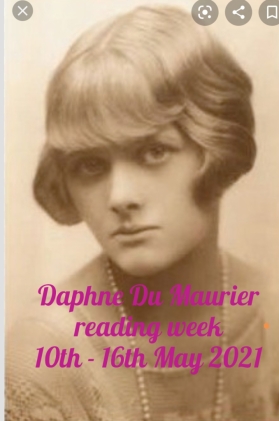I’ve read quite a few of Daphne du Maurier’s novels, but I don’t think I’d previously read any of her short stories – some of which are, of course, very famous from the film adaptations that were made of them. Last year I was toying between reading Not After Midnight and Other Stories and Don’t Look Now and other stories – both of which I owned – before I opened them and discovered they were the same collection under different names. One went to a charity shop and I read neither – but now I’ve finally read it.
In this collection, Daphne du Maurier’s tackles what I think is the hardest form: the long short story. I’m not usually a fan of short stories that go beyond 20 or so pages, because it feels like they are wasting the unique attributes of the form. But in Not After Midnight, du Maurier writes five long short stories – and I may as well take them in turn.
Don’t Look Now
The famous one! I’ve never seen the film, but I’m certainly aware of it – but we’ll be considering the story, of course. It opens:
“Don’t look now,” John said to this wife, “but there are a couple of old girls two tables away who are trying to hypnotise me.”
It’s a good start. John and Laura are on holiday in Venice, grieving the loss of their young daughter Christine – she has recently died of meningitis. The holiday is marred a little by news of seemingly random murders – somebody is roaming the streets with a knife. The couple get talking to this ‘couple of old girls’, one of whom tells John that he has second sight. When he sees a small girl wearing a pixie hood running in fear down a street, the lady tells him that Christine is trying to warn of danger in Venice.
When their son is taken ill at school, Laura flies home. John is going to drive home, but a mysterious incident makes him remain – and leads to a very dramatic and spooky ending.
This is an excellent story, deservedly renowned for its tension and creepiness, as well as a very good depiction of a British holiday in Italy. My main reservation with it is that du Maurier seems to think grieving a dead child is something only a mother would do. John tends to his wife, but doesn’t seem particularly bothered that Christine has died. But, that detail aside, a marvellous story.
Not After Midnight
Timothy Grey is a schoolteacher on holiday on Crete, suffering from some unspecified illness – possibly a nervous breakdown. He demands a chalet near the sea, because he intends to paint – the hotel staff are reluctant, because somebody staying there recently died…
The other notable guests are the Stolls – Mr Stoll is rude, loud, and drunk; his wife is silent and possibly deaf.
The title of this story is excellent, and for much of it du Maurier sustains the same tension and intrigue as ‘Don’t Look Now’ – but I found the ending rather unsatisfying and quite plebian.
A Border-Line Case
Shelagh is an aspiring actor who finds impelled to go off to Ireland to find a man called Nick, once close friends with her father. On her father’s deathbed, he has reminisced about Nick – and, in his dying moment, looks at Shelagh with fear and horror. Shelagh hopes for answers, or at least some attempt of posthumous reconciliation, by finding Nick. But when she identifies where he lives, she is ambushed and kidnapped by Nick’s accomplices, and forced to stay on his island.
Rather unsettlingly, they start that of charming, flirty conversation that sometimes happens between kidnappers and kidnappees in films, and presumably never in real life. This isn’t Stockholm Syndrome; it is instant.
There are a couple of revelatory twists in this story – one of which is to do with contemporary politics, and one of which is pretty horrifying. More something from Greek myth than life. Anyway, this was another story that started really interestingly and couldn’t sustain that intrigue satisfactorily, in my opinion.
The Way of the Cross
The only story in the collection without any sort of horror element, this is another tale of Brits abroad – in this case, Jerusalem. A group led by a stand-in vicar are touring the Holy Land, each with their own anxieties and reasons for being there. Perhaps the most memorable of the group is nine-year-old Robin – the only person there who seems to have read the gospels – who leads them in a chaotic attempt to find the Garden of Gethsemane.
This is a really good and unusual story, though one that doesn’t fit the feel of the collection at all. It is quite poignant, as the group face humiliations and failures – realising the trip is not the once-in-a-lifetime experience they’d hoped for, and finding out things about themselves and others that they’d rather not know. As I say, this isn’t horror – there is nothing creepy about it – but there is an underlying sense of lives being sadly changed, which is perhaps more horrifying than the jump scares of the earlier stories.
The Breakthrough
Some sci-fi thing about capturing essences that I didn’t enjoy at all, but that’s probably because I find sci-fi rather tedious at the best of times.

Ok, overall rather a mixed reception from me. ‘Don’t Look Now’ is brilliant, and ‘The Way of the Cross’ is great in a very different way. The other stories are largely readable, but all could have done with some rethinking and editing. Du Maurier is exceptional at premises and settings, but doesn’t always know how to keep those things going for the length of a long short story.








